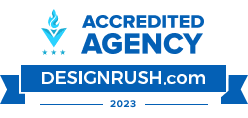Effective eMarketing – Processes & Procedures for Efficient Email Campaigns

Why is it so hard for Marketing to get an email communication out the door in a timely manner? In working together with hundreds of law and other professional services firms over the last 10 years, this is one of the most frequent complaints we hear from Clients.
Law firms collectively spend thousands of hours of billable time creating content, and frequently this information is time-sensitive. In some cases, the firm that gets the information to Clients or prospects first gets hired. But if the information is not sent in a timely manner, it quickly becomes old news – and all that time was wasted. So improving the efficiency of eMarketing communications is essential.
Misguided eMarketing metrics
When thinking about improving their eMarketing efforts, professional services firms tend to first focus on areas such as open rates, click-throughs and bounces. While those can be important indicators of the value of your campaigns, it’s also important to consider the time and effort it takes to get those mailings out the door. Just as a successful CRM initiative requires firms to focus on the people and processes involved, so does your eMarketing.
To help make your eMarketing efforts more efficient, here are some top tips we have come up with during more than a decade of working together with hundreds of professional services firms.
Don’t operate in a vacuum
When revising the process, don’t operate in a vacuum. It’s important to involve key stakeholders to get their input and support. Discuss the proposed process changes – and the reasons that they are important – with key professionals including Marketing Partners, practice heads, key business developers or other individuals who frequently contribute content. Garnering buy-in from the Managing Partner or COO is also ideal.
A process for approvals
Have a clearly defined, well communicated, standardized approval process for new content. Anyone undertaking the task of writing new content should know going in who will need to approve it and whether a conflicts check will be required. Ideally, the approval process should get started even before the writing has begun since other members of the firm may have insights that could help shape the content from the outset, thus avoiding endless rounds of revisions.
Scheduling and timing
Marketing should be notified early in the process and a timeline should be discussed. Professionals writing new content may have unrealistic expectations as to when the email will be sent. For example, Marketing may already have several mailings lined up for the following day or the rest of that week and if those mailings target the same audience, something may have to be postponed to prevent bombarding clients and contacts with a barrage of emails, which can cause an increase in unsubscribes. Marketing should also consider communicating any other time constraints. For instance, final alerts received after a certain time may need to be sent the following day. Additionally, consideration should be paid to sending times. For instance, 4 PM on Friday afternoon is probably not the ideal time to send any important information – at least not if you want people to read it.
Limit format options
Keep the formatting options to a minimum. Ideally, to minimize creation times, the look and feel of your emails should be standardized firmwide so professionals don’t try to make formatting changes. Of course, depending on your eMarketing software, you can still provide a variety of templates and a few formatting options that fall within the firm’s branding guidelines but are still flexible enough to let the professionals have a voice in how their content is displayed.
Approve content before layout
Do not start building the email or campaign until all text has been finalized and approved. Because editing text in HTML can be fraught with technical glitches and formatting challenges, it’s important to have the final copy before beginning that work. Marketing should establish that it will not build the email or draft a webpage until final content is approved and this should be clearly communicated to anyone contributing content.
Mailing essentials
Use a simple form to gather necessary information. There are key pieces of information that are necessary for all mailings, so it makes sense to gather them up front. If it’s unrealistic to expect the professionals to fill out the form, establish a process where they simply call a member of the Marketing or Business Development department who will ask the questions and fill in the form over the phone. Completed forms should be stored in a common Marketing folder for future reference. A standardized naming convention for these files is recommended. Information recorded on the form should include:
- Type of mailing: alert, newsletter or invitation (invitations will require additional information regarding the specifics of the event; this should be an additional section on the form)
- Author name(s)
- Approvers
- Date approval received
- Template to be used
- Practices to be listed
- Professional contacts to be listed in the email and on the webpage
- Title
- Subject line for email
- Additional links/supporting materials
- Mailing lists/target audience
- Target send date
- If the content was previously published outside the firm, has reprint permission been obtained?
Internal review and testing
Implement an internal reviewing and testing process. A designated group of Marketing personnel should review all emails before sending. The review process should include proofreading, spell-checking, verifying that all links work, checking any email addresses and/or phone numbers and ensuring compliance with any style-related guidelines the firm may have such as words to be avoided, spacing, use of italics, etc. This process is meant to ensure the content is perfect and should be documented for each email. Next, a test email should be sent so that the Marketing team can review the final appearance in a variety of email clients and browsers. Firms should also consider A/B testing to increase click and email effectiveness.
By streamlining and standardizing your eMarketing process, the turnaround time for sending out an alert, newsletter or invitation will be reduced, and accuracy will be improved. Marketers will be able to set realistic expectations for content contributions, and the professionals creating the content will benefit from having a transparent process that lays out requirements. Most important, complaints about email timeliness will be reduced and the opportunities for business development will increase.
– For more than 10 years, the team at CLIENTSFirst Consulting has been helping professional services firms and other organizations successfully select and implement CRM and eMarketing systems to maximize value, adoption and return on investment. If you need help with CRM, eMarketing, Data Quality, Data Privacy Compliance or Client Intelligence, contact us at 404-249-9914 or Info@ClientsFirstConsulting.com.







